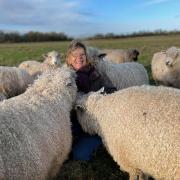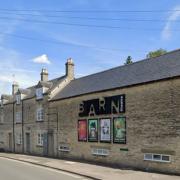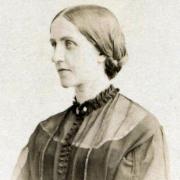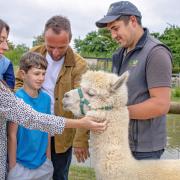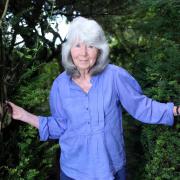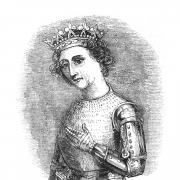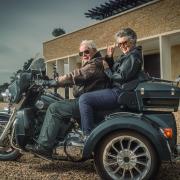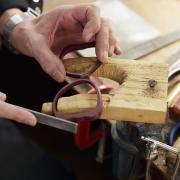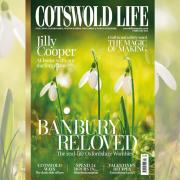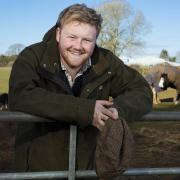Why Adam Henson has finally got round to committing the story of our nation’s livestock heritage to print

There are no elephants on my farm. There never have been and it's pretty unlikely there ever will be. But for the last few years, whenever I've talked about the books I've written, there's definitely been an elephant in the room. On my theatre tour, at public events and especially at book signings up and down the country, I've been really aware of the great unasked question - 'Why haven't you published one about rare breeds?' It's a very good point. Having already put pen to paper about life on the land (Adam's Farm), the Henson family history (Like Farmer, Like Son) and man's best friend (A Farmer and His Dog), a volume about the fascinating story of Britain's native livestock breeds was long overdue. After all, it's well-known how much I love the unique types of historic farm animals that are linked with the diverse landscapes of the British Isles. From Norfolk Horn sheep and Berkshire pigs to Exmoor ponies and Golden Guernsey goats, I've made a career of breeding, promoting and displaying these wonderful creatures to the public. I suppose it's something that's in my blood; fifty years ago my dad, Joe, spearheaded the rare breeds movement in this country and not only founded a conservation charity, the Rare Breeds Survival Trust (RBST), but also created Britain's first farm park. The visitor attraction was an ingenious way of showcasing his collection of animals which had once been commonplace but by the early 1970s were seriously endangered, dismissed by most farmers at the time as old-fashioned, uneconomical and undesirable. I'm incredibly proud to have followed in Dad's footsteps to become the current-day face of the Cotswold Farm Park. The good news for book-worms - and animal lovers - is that after years as a published author, I've finally committed the story of our nation's livestock heritage to print in my latest book A Breed Apart: My Adventures with Britain's Rare Breeds. It's autobiography, history book, love story and travelogue all rolled in to one, and follows my travels through the UK and Ireland meeting remarkably dedicated breeders and their amazing livestock (and believe me, some of the four-legged subjects in the book are characterful, prize-winning 'stars' in their own right). But importantly my journey around the British Isles, and the entire story of our native breeds, begins and ends at home in the Cotswolds.
Easily the best-known local breed is the Gloucestershire Old Spots pig. These big, lop-eared porkers with a taste for windfall apples used to graze the orchards of the Vale of Berkeley, but would frankly eat just about anything and were so popular with smallholders as a living, breathing waste disposal unit that they were known as the Cottagers' pig. Another of our county breeds has a very valid claim to the most remarkable back-from-the-brink story of them all. In the early 1970s the number of purebred Gloucester cattle had dwindled to just one herd, isolated to an old-fashioned farm beside the River Severn on the Arlingham peninsula. Thankfully these mahogany beauties, with their upswept horns and distinctive white stripe along their backs, are faring much better now. The third Gloucestershire breed is one which brought enormous wealth to England; the Cotswold sheep was, and still is, renowned for its long, lustrous fleece which in the Middle Ages was worth a small fortune. Together the Old Spots, the Old Gloucester and the Cotswold are 'The Big Three' and Gloucestershire's farming claim-to-fame is that it's the only county that has surviving breeds from the three major livestock species of pig, cattle and sheep.
Of course the animals are the main focus of A Breed Apart, but the story of Britain's native farm animals is as much about people as it is livestock. If it wasn't for a hardy band of enthusiasts and breeders lavishing time, trouble and a great deal of money on their own particular herds and flocks, some of these breeds would have died out decades ago and British farming would be the poorer. As a seasoned Breed Society secretary told me; 'the fortunes of the four-legged animals relies on the dedication of the two-legged ones.' So the book begins with a visit to one of the great characters of rural Gloucestershire, who also happens to have done an enormous amount to preserve and promote 'The Big Three' over many decades. Eric Freeman is almost like an Uncle to me; I've known him all my life, he's a man of sage advice and we share the same passion for conserving Britain's traditional farm livestock.

There are other legendary figures past and present in the book too. I devoted a whole section to Charles Martell from Dymock. He's just had a hugely successful year as High Sheriff of Gloucestershire but in the realms of food and farming he's something of a hero for his devotion to Gloucester cattle and reviving the county's cheese-making tradition. Then there was a foresighted lady called Avis Colnett who we have to thank for putting farmhouse Single and Double Gloucester back on the map. In the 1930s she was foresighted enough to visit small, isolated dairy farms and for the first time in history, wrote down the age-old recipes being used to make local cheese. Forty years later it was Miss Colnett's original notes which kick-started Charles' cheese-making prowess.
And I mustn't forget a dogged, determined pig man called George Styles. In the 1950s and '60s when virtually every other pork farmer was switching to lean, fast-maturing, so-called 'modern' breeds, George was seen as a maverick for sticking with his beloved Gloucestershire Old Spots pigs. But his refusal to follow the trend of the day effectively saved the Old Spots from extinction and even now he's referred to as the 'Grandfather' of the breed.
Today the hard work of all those wonderful characters lives on, in the British breeds that are on public display at the Cotswold Farm Park where the tale of rare breeds conservation began. My dad's original collection had 'The Big Three' at its heart, and now we can proudly boast 50 different breeds from all corners of the Kingdom. I've loved travelling around the country and I'm so grateful to everyone who shared their stories for the new book. Like the proverbial elephant, it's an experience I'll never forget.
Read more...
A Breed Apart: My Adventures with Britain's Rare Breeds by Adam Henson is published by BBC Books in hardback at £20.








